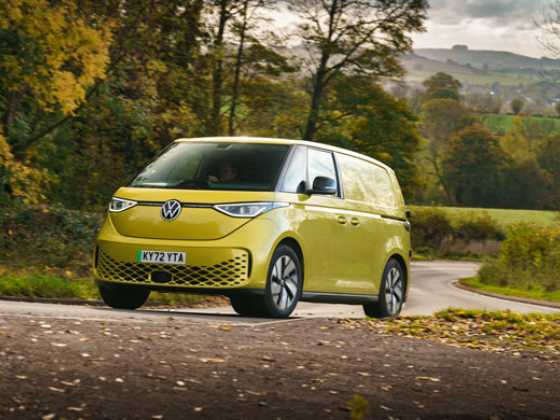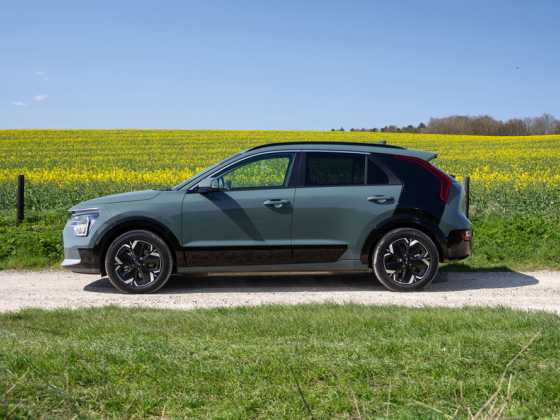A new era for electric
After ten days around London in the new Ampera, Roland Rendell reckons range extending technology will become all the rage - and Vauxhall’s latest innovation will take some beating.
1884 saw British engineer, Edward Butler, construct the first petrol internal combustion engine. Two years later saw Karl Benz use a combustion engine in first the patented car. Up popped Rudolph Diesel in 1893 with the first diesel combustion engine, and the fight was on for fuel supremacy.
In the Noughties, we saw the birth of the first full production hybrid, and just as importantly, the re-birth of GreenFleet. The 2007 Arrive’n’Drive witnessed the re-introduction of EV technology, and despite there being some EVs on the road, it wasn’t until 2009 that we saw the first full production EV, in the form of the Mitsubishi i-MiEV. Since then we have been on a roller coaster ride as the manufacturers scrap for ultra low carbon supremacy.
Extended range
Now we have the birth of the E-REV - the Extended-Range Electric Vehicle. In the US, GM are hoping to make a big noise (a lot louder than the engine anyway) in the fleet sector with the introduction of the Chevrolet Volt. Over here, its called the Vauxhall Ampera. Having now experienced it myself courtesy of Hitachi Capital Vehicle Solutions, Vauxhall appear to have stolen a march on their rivals.
The Ampera made its GreenFleet debut in 2011. It’s the first time I have ever seen fleet managers running to a manufacturers plot to book a test drive. The same happened in Scotland, and again in the North East, where they have made great progress in infrastructure. I had seen it in the flesh many-a-time, but needed to get behind the wheel and put it to the test myself. When it arrived, I was like a kid in a sweet shop. From the front, with its boomerang-shaped lights and air vents, it has the look of a sabre-toothed tiger. But prehistoric this isn’t. Touch the chrome button on the door handle and the chrome lock pops up inside. At first, I experience a bit of panic as the ceiling is having a go at my already thinning hair, but a quick adjustment lowers me into a more relaxed driving position. In fact, it’s so low, it feels like a sports car. A quick glance in the back and it’s apparent that this is a four-seater. That should make no difference to the fleet sector, but not ideal for the taxi and private hire industry.
I take a while to absorb the many features that this futuristic beast comes with. On the panel in front of me there is the fuel pump symbol, indicating how many miles left in the 30 litre petrol tank (more on that later) and it’s got around 60 miles left. Underneath is the large, green, battery level and range indicator, which is empty. At the bottom is a total range indicator, telling me what is achievable from both. Bang in the middle is the MPH, to the right shows what doors are open, and the top right tells you what mode you are in, according to the automatic box. Under this is a symbol that indicates driving style, in terms of acceleration and braking – which I found very useful - a kind of spirit level-type indicator. It moves up to indicate the application of power, and down for the braking. The idea is to keep it in the middle as much as possible. Bottom right is your mileage trip and across the bottom, if you press the right washwipe lever, is a scrolling display of the MPG on different journeys
Finally, above this, and under the speedo, is the actual driving mode, which allows you to choose Normal, Sport, Mountain and Hold.
The ‘Infotainment’ system sits in the middle and is cased in a metallic-looking material. It’s all touch sensitive - climate control, radio, CD and satnav options at your finger tips. Crowned by a 7”ish touchscreen display, the whole cockpit is well laid out and quite easy to get to grips with.
 A clear rear view
A clear rear view
Time to move. I select reverse and am immediately conscious of a review I read that said the rear view through the split rear screen was, I quote, “rubbish”. Utter nonsense - it was fine for me, especially when you add the aid of the rear mounted reversing sensors and camera that transmits to the screen.
However, the one thing I noticed is the lack of a rear screen wiper. In the summers we have come to expect, as well as the rain sodden autumns, winters and springs, a rear window that is quite flat for aerodynamic reasons needs a wiper. Also, I notice a pedestrian, be she doesn’t notice me because she cannot hear me. As with all EVs, the Ampera is silent. Then, I notice on the left hand indicator lever a small symbol that indicates a noise might resound if it’s pressed. I oblige and it doesn’t let me down, trumping a little noise that let her know I was on the move, seperate from the main horn.
I pull out and immediately head for a petrol station. £30 later and the 30 litre tank is full, with the fuel pump symbol indicating 313 miles. All I need to do now is give it an overnight charge, and we’re good to go. When I arrive home and plug into the mains, it lets out a little “parp” on the horn and a green dome light glows on top of the dash to indicate that this baby is sucking in the voltage.
This E-REV system has 3 key components. A T-Shaped battery that runs under the centre console and the back seats. This gives the vehicle a low centre of gravity and also extra boot space, which is a great design feature. To prolong battery life, the unit never fully charges or depletes, and the smart-use cycle comes with a 100,000 mile or eight year warranty. The battery also benefits from energy recycled from the cars regenerative braking system.
In the front is a 150PS electric drive unit that delivers 370Nm of torque and accelerates the Ampera from 0-60mph in less than nine seconds. The top speed is limited to 100mph in both electric and extended-range electric modes. Finally there’s the generator, powered by a 1.4 litre, 16v VVT ECOTEC petrol engine that generates 86PS. This kicks-in once the battery reaches its minimum state of charge, or when the driver selects Hold mode. On a full tank, it will deliver 310(ish) miles before you need to refuel. This is where the E-REV technology comes in to its own. This engine is a generator, and means the electric drive train is always powering the car. Range anxiety? No such thing with this.
The next morning, the battery indicates 35 miles, and the petrol engine 312, so I should be good to go for around 350 miles. First up is the M11 and the Ampera eases up to 70mph but quickly realise that this is more than capable of quite a lot faster. I flip the cruise control on and then find myself glancing at the centre screen to watch the movement of the MPG indicator. And, slowly but surely it starts to rise. Onto the north circular, and I have to drop to 50mph. This is where it starts to make a massive difference. Ask yourself this – when have you seen your MPG creep over the 100 mark? I was getting quite excited. By the time I came off and headed on the A-road towards City Airport, ExCel and the Docklands, I was over 150. A few laps around roundabouts, and over the bridge back and forth, and I peaked. I had managed to reach an amazing 250 miles per gallon.
During the next few hours, I put the Ampera through London rush hour traffic conditions, avoiding the Olympic lanes and ignoring the Congestion Charge signs. After a while, the generator kicked in, and as a result, the MPG slowly drops. But after central London, A-road, dual carriageway and motorway driving on the way back, I got home and still had an MPG reading of 92. Incredible.
I spent the next few days in the Ampera, and I have never attracted the attention of so many people, and spoken to so many complete strangers. I had averaged around 25 miles a day, given it three charges, and still had over half a tank left from first filling it up. I did not want to let it go back to its rightful owner.
A revolutionary drive
Hitachi Capital Vehicle Solutions had offered me this car to try, and if you haven’t yet had a go, then make sure you do. For me, it is the best car I have driven in a long time. Why? It looks the part, the acceleration and feel of the drive is amazing, and finally, when you look at what you get back in terms of MPG, you get a sense of real satisfaction. The model I drove (Electron) will set you back £33,995 after the government grant, but the lower-spec models are available for £29,995 (Earth) and £32,250 (Positiv), and HCVS can offer the Electron, with metallic paint and a British Gas home charging point (installed) for £650 per month (£593 after 10 per cent VAT is recovered). This is based on a 36 month contract and 30,000 miles (in total) with maintenance, UK breakdown cover and tyre replacement. It emits 27g/km of CO2 and falls in to the 5 per cent BIK bracket.
The range extender has arrived, and looks set to stay. Leading the way is the Ampera - a fitting name for a car that has technology that should revolutionise driving. Until we get the Pure EV and charging times in order, this car will take some beating.









